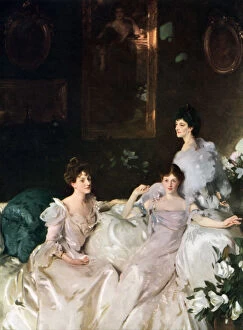John Singer Collection (page 2)
John Singer Sargent, a renowned artist of the late 19th and early 20th centuries, left an indelible mark on the art world with his exquisite paintings
All Professionally Made to Order for Quick Shipping
John Singer Sargent, a renowned artist of the late 19th and early 20th centuries, left an indelible mark on the art world with his exquisite paintings. One of his notable works is "Carnation, Lily, Lily, Rose, " created in 1885-86. This masterpiece showcases two young girls surrounded by vibrant flowers, capturing the innocence and beauty of youth. In another captivating piece titled "Gondolas by the Piazzetta" from c1904 (1925), Sargent transports us to Venice's enchanting canals. The painting exudes a sense of serenity as gondolas glide through the water under a picturesque sky. Sargent's talent for portraiture shines through in his study of prominent figures such as the Duke of York and Lady Elizabeth Bowes-Lyon in 1923. These portraits capture their subjects' regal presence and reveal Sargent's ability to convey personality through brushstrokes. Among his earlier works is "Miss Beatrice Townsend" from 1882 – a stunning portrayal that exemplifies Sargent's attention to detail and mastery of light and shadow. Similarly impressive is "Marie Buloz Pailleron (Madame Edouard Pailleron)" painted in 1879; it captures Madame Pailleron's elegance with remarkable precision. Sargent also demonstrated his versatility by depicting scenes beyond portraiture. In "En route pour la peche (Setting Out to Fish)" from 1878, he brings life to a tranquil countryside setting where fishermen embark on their journey amidst lush greenery. Venice served as an inspiration for many of Sargent's works. His painting "Street in Venice" from 1882 immerses viewers into Venetian charm with its intricate architecture and bustling atmosphere. Another notable work set against Venice's backdrop is "Sir Neville Wilkinson on the Steps of Palladian Bridge at Wilton House" from 1904/1905.




